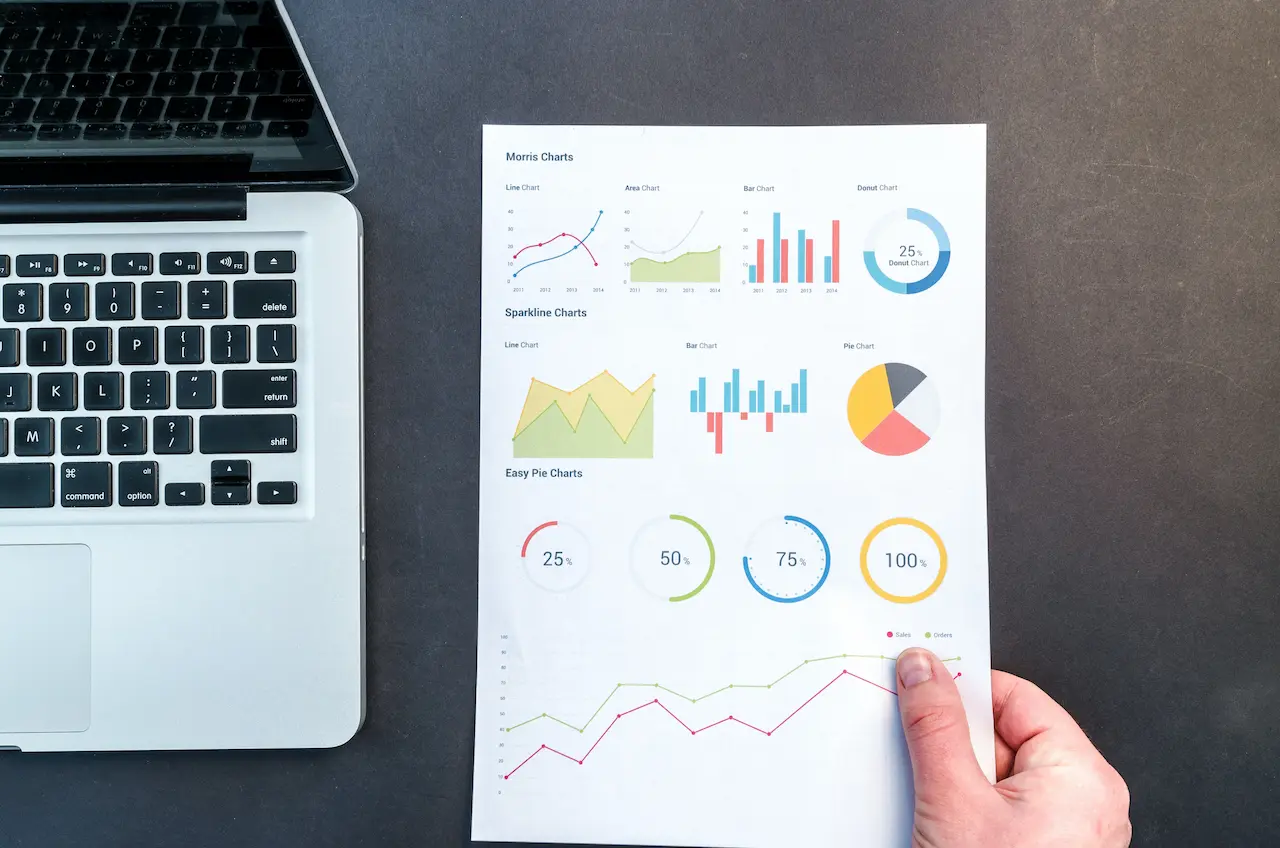Greetings, I’m Papazon (@nomadkazoku).
Embarking on a new adventure in April 2023, my family relocated from Japan to Malaysia, and we now call Kuala Lumpur our home.
In this blog, I will share some exciting stories that led me to open a securities account with [affi id=3] to move abroad. Surprisingly, I discovered that the account is free to use and maintain even for non-US residents (with some conditions).
Check out our related posts on [ Firstrade ] for more in-depth information:
Firstrade – [ Commission-Free U.S. Stock Trading for Non-Residents! ]
When it comes to investing, Exchange-Traded Funds (ETFs) have gained significant popularity among investors for their simplicity and potential for growth. If you’re looking for an easy and effective way to invest, ETFs might be the perfect solution for you.
Within the pages of this article, I will provide you with a comprehensive roadmap for discovering the optimal ETFs that align with your investment goals, empowering you to reach financial prosperity.
Understanding ETFs: A Brief Introduction

Similar to individual stocks, ETFs are investment funds that are traded on stock exchanges and are specifically designed to replicate the performance of specific indexes, sectors, or asset classes.
Thanks to their diversified portfolios, ETFs provide a convenient avenue for accessing a broad array of securities through a single investment.
The Benefits of ETFs
ETFs come with several advantages that make them appealing to investors. Diversification is a key benefit, as ETFs hold a basket of securities, spreading the risk across different companies or assets.
In addition, the advantage of liquidity comes into play with ETFs, as they can be traded at market prices throughout the trading day.
Types of ETFs
Equity ETFs: Simplifying Stock Investments
Equity ETFs offer an opportunity to invest in a diversified portfolio of stocks without the need to buy each individual stock. By doing so, investors gain broad exposure to different companies and industries, thus reducing company-specific risks. This includes large-cap, mid-cap, and small-cap ETFs that track indices like the S&P 500, NASDAQ, and Russell 2000.
Bond ETFs: Stepping into the World of Fixed Income Investments
For those seeking stability and regular income in their investment portfolio, Bond ETFs provide a compelling option. These ETFs invest in various fixed income securities including government bonds, corporate bonds, and municipal bonds, providing predictable income and relative stability compared to stocks.
Commodity ETFs: Navigating Through Tangible Assets
Commodity ETFs offer investors an avenue to invest in physical assets such as precious metals, agricultural goods, and energy commodities, without the need to physically store them. They offer a hedge against inflation and geopolitical risks while providing portfolio diversification.
Sector ETFs: Focusing on Specific Industry Sectors
Sector ETFs allow investors to target specific sectors of the economy, enabling them to capitalize on growth trends in these areas. From technology and healthcare to energy and financials, investors can align their portfolio with their sector outlooks.
International ETFs: Broadening Horizons with Global Diversification
International ETFs open the door to global markets, allowing investors to diversify their portfolio beyond their domestic boundaries. These include country-specific ETFs, regional ETFs, and emerging market ETFs.
Selecting the Best ETFs for You

Finding the best ETFs for your investment goals requires careful consideration.
Keep these key considerations in mind:
Determine Your Investment Objectives
Start by defining your investment objectives. Are you looking for long-term growth, regular income, or a combination of both? Clarifying your goals will help narrow down the types of ETFs that are most suitable for you.
Consider Asset Class and Investment Strategy
ETFs encompass a wide variety of asset classes, including equities, bonds, commodities, and real estate.
Each asset class offers unique characteristics and potential returns. Consider your risk tolerance and time horizon to determine which asset class aligns with your investment preferences.
Within each asset class, ETFs may employ different investment strategies. Some ETFs passively track an index, while others are actively managed and seek to outperform the market. Carefully evaluate the strategy of each ETF and determine whether it aligns with your investment philosophy.
Analyze Performance and Expense Ratios
When evaluating ETFs, analyze their historical performance.
Look for consistent returns over time and compare them to relevant benchmarks. It’s worth keeping in mind that past performance does not necessarily reflect future results, but it can offer valuable insights into how an ETF has performed in the past.
Consider the expense ratio of each ETF as well. This represents the annual operating expenses as a percentage of the fund’s assets. Lower expense ratios can play a pivotal role in shaping your investment returns over an extended period.
Review Holdings and Index Methodology
Examine the holdings of the ETFs you are considering. Review the underlying securities or assets to ensure they align with your investment preferences and risk tolerance. Make sure the ETF’s holdings are diversified and well-balanced.
For index-tracking ETFs, understand the methodology used to construct and rebalance the index. Transparent and rules-based methodologies are generally preferred as they provide more clarity on how the ETF’s performance relates to the underlying index.
Assess Liquidity and Trading Volume
Liquidity should be given careful consideration when making investments in ETFs. Higher liquidity generally translates to tighter bid-ask spreads and easier trading. Look for ETFs with sufficient trading volume and liquidity to ensure efficient execution of trades.
Exploring the Best ETFs for Different Investment Goals

Armed with an understanding of the crucial factors, let’s now examine a range of outstanding ETF options that cater to diverse investment goals.
Long-Term Growth
If your goal is long-term growth, consider broad market equity ETFs that provide exposure to a wide range of stocks.
Exemplary cases consist of the Vanguard Total Stock Market ETF (VTI) and the iShares Core S&P 500 ETF (IVV), which grant investors exposure to a broad spectrum of stocks across the entire market and have established a reputation for producing strong long-term returns.
Regular Income
For investors seeking regular income, bond ETFs can be a suitable choice. The iShares iBoxx $ Investment Grade Corporate Bond ETF (LQD) and the Vanguard Total Bond Market ETF (BND) are popular options.
These ETFs focus on building a well-diversified portfolio of high-quality corporate or government bonds, delivering a stable and continuous income stream to investors.
Diversified Portfolio
If you prefer a diversified portfolio across multiple asset classes, consider target-date retirement ETFs.
These ETFs employ an automatic asset allocation adjustment mechanism that progressively becomes more conservative as the target retirement date draws nearer.
The Vanguard Target Retirement 2050 ETF (VFIFX) and the Fidelity Freedom 2035 Fund (FFTHX) are examples of target-date retirement ETFs.
Sustainable Investing
For those interested in sustainable investing, there are several ESG-focused ETFs available.
The iShares MSCI EAFE ESG Optimized ETF (ESGD) and the Xtrackers MSCI USA ESG Leaders Equity ETF (USSG) are popular options. These ETFs invest in companies that meet specific environmental, social, and governance criteria, allowing investors to align their investments with their values.
Remember, these are just a few examples, and it’s important to conduct thorough research and consider your individual circumstances before making any investment decisions.
Conclusion: Your Path to Successful ETF Investing
Investing in ETFs can be a straightforward and effective way to achieve your financial goals.
By understanding your investment objectives, considering asset classes and strategies, analyzing performance and expenses, reviewing holdings and methodology, and assessing liquidity, you can find the best ETFs that align with your needs.
Remember to maintain a diversified portfolio and regularly evaluate your investments to ensure they remain in line with your objectives. If you require customized guidance, consider seeking advice from a financial advisor who can cater to your individual circumstances.
Embark on your investing journey with confidence, armed with the knowledge of the best ETFs that can help you achieve long-term success.
Frequently Asked Questions (FAQs)
1. Are ETFs suitable for beginners?
Yes, ETFs can be suitable for beginners. They provide diversification, flexibility, and access to various asset classes. However, it’s essential to understand your investment goals and risk tolerance before investing. Consider seeking guidance from a financial advisor if you’re new to investing.
2. Can I lose money investing in ETFs?
Yes, like any investment, there is a risk of losing money when investing in ETFs. The value of ETFs can fluctuate based on the performance of the underlying assets. It’s important to carefully consider your risk tolerance and conduct thorough research before investing in any ETF.
3. How do I buy and sell ETFs?
ETFs can be bought and sold through brokerage accounts. You can place buy or sell orders for ETF shares on stock exchanges during trading hours. Ensure you have a brokerage account and understand the trading process before making any transactions.
4. Are ETFs better than mutual funds?
ETFs and mutual funds offer different features and benefits. ETFs provide intraday trading, potential tax advantages, and lower expense ratios. Mutual funds, on the other hand, may offer automatic investment options and more accessible minimum investments. Consider your investment preferences and consult with a financial advisor to determine which option is best for you.
5. How can I track the performance of ETFs?
You can track the performance of ETFs by monitoring their net asset value (NAV) and comparing it to the performance of their underlying index or benchmark. Additionally, financial websites and platforms provide real-time information on ETF prices, historical performance, and key metrics.
Remember, investing involves risk, and it’s important to do your due diligence and consider your individual circumstances before making any investment decisions.
